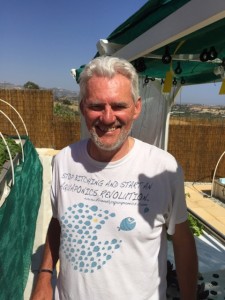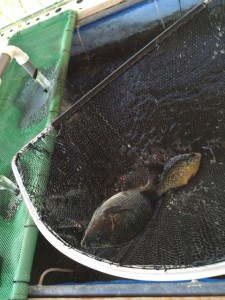In 2001 I was diagnosed with a goose egg sized brain tumor and underwent two cranial operations and radiation therapy. Next to changing my whole lifestyle, I also looked at nutrition, to help me on a path back to good health.
When we moved to Cyprus in 2003, I found that contrary to most Northern European  countries, where organic farming is more prevalent, most of the local vegetables are grown with chemical fertilizers and full of pesticides. The latter the local farmers ironically call “spraying medicine”!
countries, where organic farming is more prevalent, most of the local vegetables are grown with chemical fertilizers and full of pesticides. The latter the local farmers ironically call “spraying medicine”!
In order to enjoy a healthy diet, I started growing my own organic vegetables.
One of the topics that appear in most articles written about health diets is the fact, that food should be unrefined, whole and natural. But even more important, where vegetables are concerned, is the fact that they should be organic, freshly picked, locally grown and in season.
One way is a popular new form of agriculture called “Aquaponics” (AP). Not being an expert, I attended a course and subsequently built an AP system here on Cyprus that now produces up to 8 harvests per year.
An introduction to Aquaponics
Aquaponics produces fish and vegetables by combining aquaculture and hydroponics. The system uses fish tank effluent water as the nutrient solution for an organic hydroponics growing operation. The hydroponics part acts as a biofilter for the fish tank water, cleaning and recirculating it, so the fish stay healthy.
Aquaponics uses far less land, does not require soil fertility or even soil, uses little water, uses far less energy than farming in the ground, is more productive for the same area, produces protein and vegetables and is organic. It is also substantially less labor intensive than farming in the ground.
Benefits of Aquaponics
Put bullet points in below please
Produces both fish and organic vegetables
Uses only 5 percent of the water that ground farming does
Planting density of 4 to 6 times in comparison to planting in ground
Produces vegetables in half the time growing in ground would require
Combining the faster cycle with increased planting density allows 8 to10 times the amount of organic produce for the same area of traditional agriculture
It is organic and can not be cheated. Due to the closed loop, using chemical pesticides, herbicides or fertilizers would cause the fish to die. Even most organic pesticides will kill the fish
No weeds, soil pests or pathogens. No tilling, cultivating, fertilizer spreading, compost shredding, manure spreading, plowing cover crops in, irrigating.
The only inputs are: electricity, fish food, fish fry, seeds and potting media
General principles
In contrast to regular Hydroponics which requires introduction of expensive chemical and mineral based nutrients into the water, aquaponics uses the fishes excretion of solid waste, urine as well as ammonia excreted through the gills.
A bacteria living in the system metabolizes ammonia and turns it into nitrite, a nitrogen compound. Both ammonia and nitrite are toxic to the fish, but a different bacteria turns the nitrite into nitrate which is the fertilizer for the vegetables in the system.
The plants grow through removing these nutrients from the water and “clean” the water for the fish enabling the cycle to repeat itself over and over.
It is a self-balancing recirculating system requiring only fish food, aeration and pumping of the water to keep the cycle going.
Contact
For more information pertaining to this new form of growing vegetables, please send an email to: [email protected]
More source material on: www.friendlyaquaponics.com









